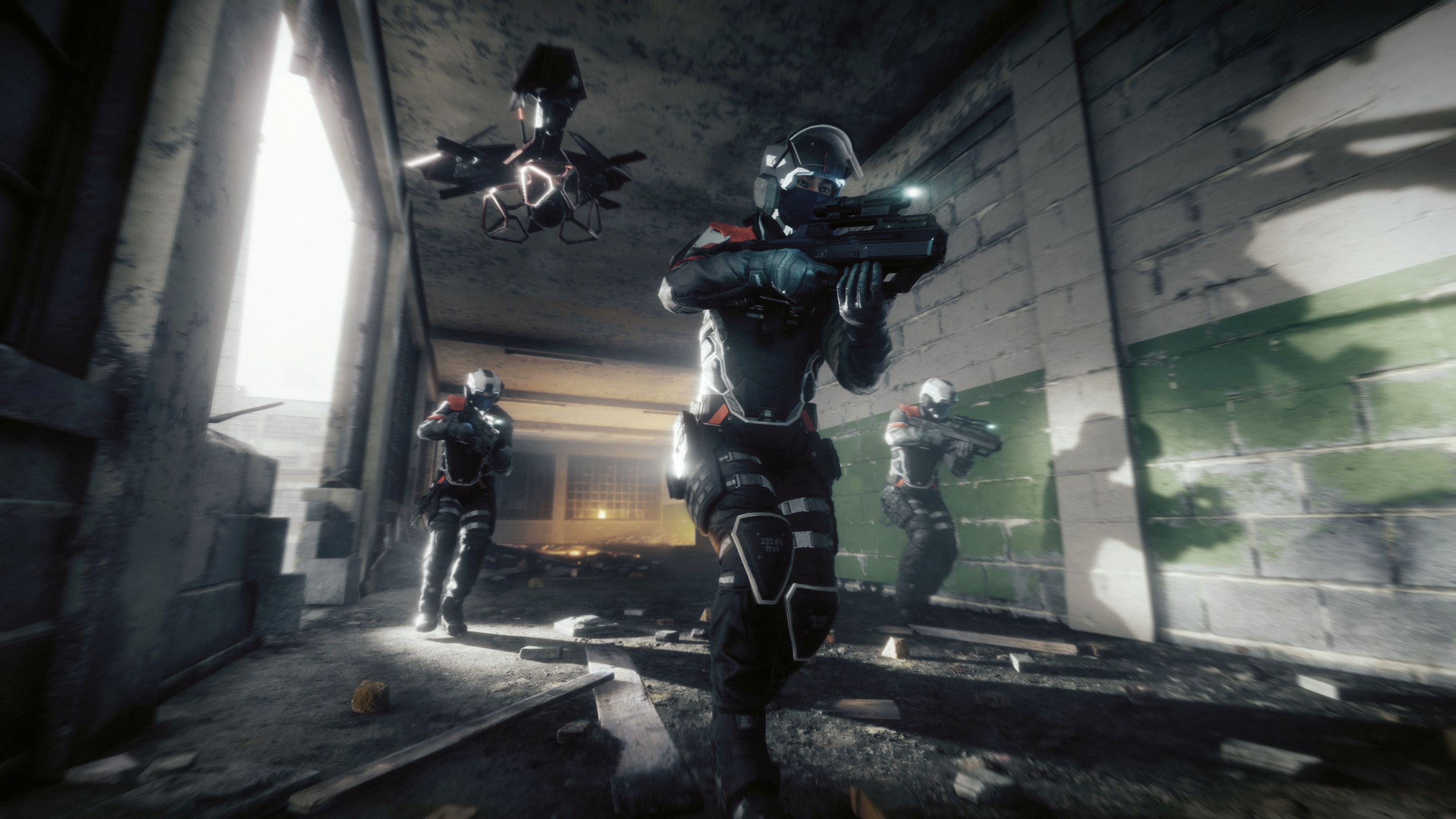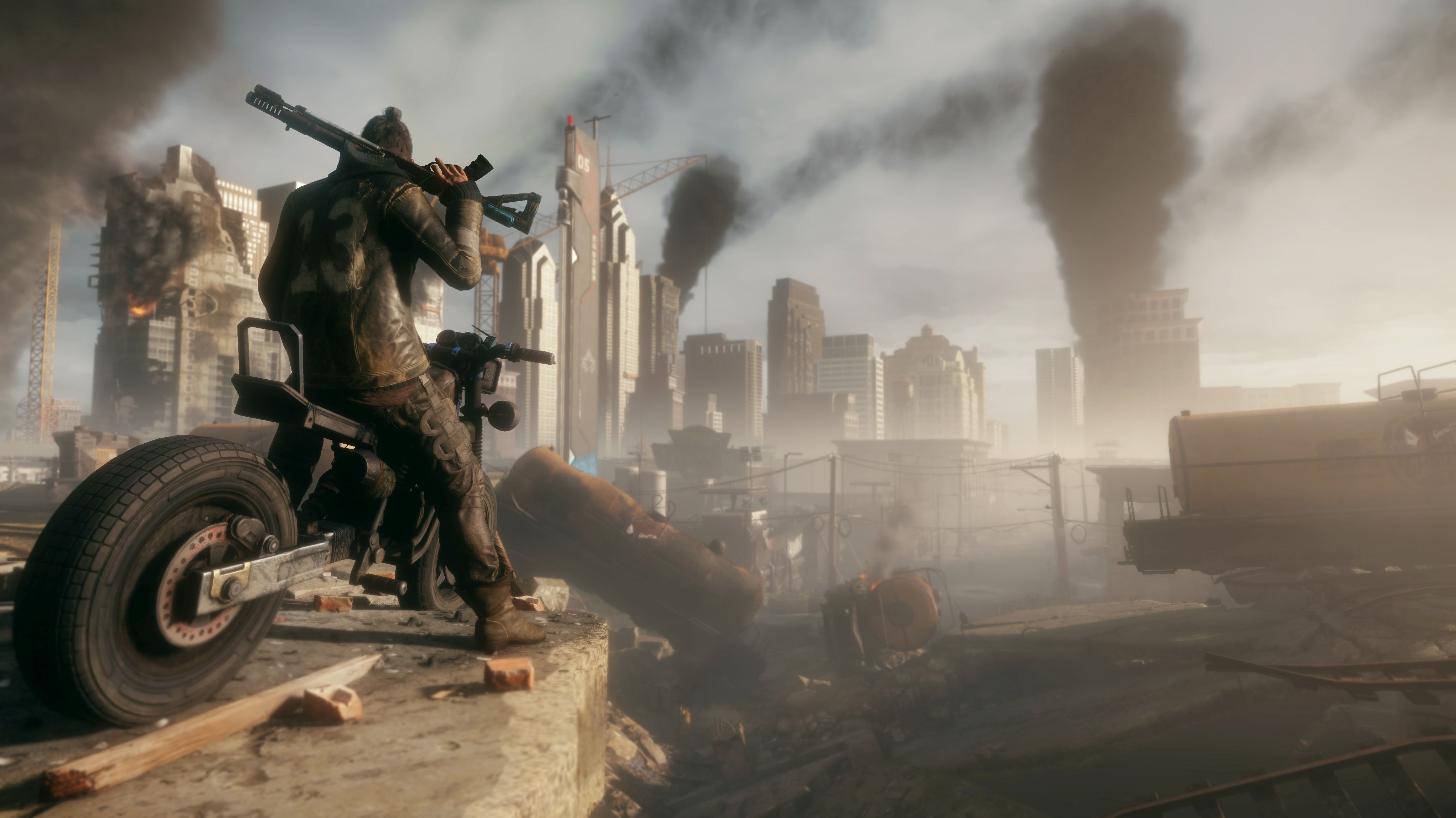Homefront: the open world shooter that feels like urban Far Cry

Homefront: The Revolution sounds exciting. Ostensibly a sequel to Kaos Studios' bland 2011 FPS, it's elevated by a new plot, new development team, and new focus on emergent open world design. Before I get to play it, Deep Silver Dambuster describes a shooter that attempts to capture life as a guerilla fighter.
It, they say, is a world where you are outgunned; where you're nipping at the heels of a more powerful force. It, they say, is a shooter where you'll need to know when to withdraw. Soon after, I get to play a section of its open world. Once, during a scripted sequence, my panicked squadmates tell me to retreat from a fight. I do, but only because there's an objective marker. Outside of this mission, the sense of being the underdog dissipates completely. I can wipe out patrols without fear of retribution, and capture Strike Points with relative ease.
Getting a bit cocky, I decide to throw myself at a heavily defended outpost, and, fair enough, I am swiftly killed. But the rest of the time, I seem to be a one-man army able to kill every KPA oppressor foolish enough to have a go. Based on what I played, Homefront: The Revolution doesn't feel like a game about resistance fighters in a desperate struggle for freedom. It feels like an urban Far Cry, or a military Watch Dogs. Its main inspiration is not guerilla fighters, it's the Ubisoft school of open world design.

Homefront: The Revolution takes place in a Philadelphia now under the control of the Korean People's Army. It features a map, and on that map are Strike Points. Complete a Strike Point, and the camera swishes around the area to show nearby activities and rewards. As you complete events, the map gradually shifts colour to show your increasing influence.
"The basis of it is similar to what you may have seen in other games," says senior level designer Fasahat Salim. "When you take a Strike Point and you unlock that space you get the content revealed to you, but we're not killing off the enemy. There's always an enemy presence in that space. The only thing that's changing is you now have more of a resistance influence in that space as well. What you see is more resistance fighters on the ground, more resistance fighters taking vantage points."
Weapons are scrappy, makeshift affairs that offer plenty of customisation options.
I like the sound of this approach. One of my major problems with Far Cry 3 was the way that, by completing its outposts, I was creating safe spaces where the enemy couldn't move. It felt as if I was slowly eroding away all the fun I could have in that world. Homefront: The Revolution differs in that it won't restrict the KPA's movement—emergent patrols and events will still trigger in areas with a resistance presence. The threat will always remain.
Even within Homefront: The Revolution's familiar template, there are still things that stand out. The weapons are scrappy, makeshift affairs that offer plenty of customisation options. New scopes, barrels and attachments can be crafted and installed on the fly. There's toys, too. Explosives, remote hacking devices and noisemakers can each be unleashed via a number of different delivery mechanisms. You can attach a hacking tool to an RC car, drive it under a drone, detonate it, and watch as the drone seeks out an enemy sniper nest and self-destructs inside. It's a gimmick, but it's a good one.
Keep up to date with the most important stories and the best deals, as picked by the PC Gamer team.

I hope my reservations will be answered by the other zones. The demo I play takes place in a 'Red Zone'. These derelict, bombed out streets are found along the outskirts of the city. Civilians aren't supposed to be there, so KPA patrols and snipers will shoot on site. It is, to be fair, exactly the sort of setup that lends itself to the Ubisoft-style theme park. The Yellow Zones sound more interesting, although Dambusters isn't showing them yet. "It's a completely different kettle of fish," says Salim. "It's a ghetto; it's where the population has been focused. There is a lot more population present. Security cameras are everywhere, and it's heavily policed and heavily patrolled." These areas are all about stealth, and building up support among the populace to trigger riots against the KPA.
In missions, players will also explore the Green Zone. "This is the central part of Philadelphia where all of the high-rises are," says Salim. "The opulence; where you see iconic things like city hall. We wanted to create very contrasting experiences in each of the zones." The existence of these distinct areas and experiences makes me hope that this is more than just a sandbox reskin. It won't be revolution, I don't think, but, combined with some accomplished combat and fun gimmicks, Homefront: The Revolution could still be an entertaining shooter.

Phil has been writing for PC Gamer for nearly a decade, starting out as a freelance writer covering everything from free games to MMOs. He eventually joined full-time as a news writer, before moving to the magazine to review immersive sims, RPGs and Hitman games. Now he leads PC Gamer's UK team, but still sometimes finds the time to write about his ongoing obsessions with Destiny 2, GTA Online and Apex Legends. When he's not levelling up battle passes, he's checking out the latest tactics game or dipping back into Guild Wars 2. He's largely responsible for the whole Tub Geralt thing, but still isn't sorry.

